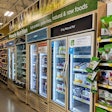
It’s impossible to miss the news of current global supply chain challenges, especially during (as of the writing of this article) the holidays. Warnings of potential out-of-stock product, supply shortages and delivery delays have been bombarding consumers since November, and the consensus has been to “shop early!” lest Christmas be a gift-less wasteland.
But these issues have been happening for a while, and it’s clear that supply chain struggles are a top concern among those in the pet food industry going into 2022.
“When looking to the challenges ahead in 2022, it’s hard to overlook the supply chain disruption impacting our industry,” said Dana Brooks, president and CEO of the Pet Food Institute (PFI). “It is possible that disruptions to ingredients, labor and transportation now will be further compounded [in 2022] by the implementation of government mandates and tax incentives for renewable diesel production, which uses some of the same oils and fats that pet food makers rely upon. As states implement policy solutions for clean energy that can lead to a greater demand for plant- and animal-based oils and fats within the energy sector, U.S. pet food makers face an increasingly challenging landscape when sourcing among these ingredients.
“The added demand and tax credits have caused some of these prices to double or even triple, and impacted the availability to the pet food industry during a time of existing supply chain disruption,” said Brooks. “Unfortunately, government actions are creating an unfair market advantage to the energy sector and a disadvantage to companies purchasing ingredients for pet food. It will require advocacy and outreach to state legislatures and ingredient partners to find solutions that allow for fair access to oils and fats, while still addressing climate change and supporting the development of alternative energy sources.”
Supply chain challenges on multiple fronts: ingredient sourcing, transportation, costs
There is no shortage of avenues to take when it comes to discussing current supply chain issues, probably because the problems touch every aspect of production.
“2022 will continue to present challenges for supply chain management,” said Juan Gomez, global director for Alltech, which provides pet supplements and feed additives for pet health and nutrition. “Supply chain disruption and delays have impacted not only the pet food industry but business in general and in certain cases may have adversely affected the profitability of business. The pandemic has highlighted the fragility and vulnerabilities of the supply chain. Ingredient shortages may lead manufacturers to rethink toward a vertical integration. In the short-term, however, manufacturers may want to keep their ingredient inventory high to continue producing and stay ahead of demand in 2022.”
For example, Luca Carollo, business development manager for Clevertech, which designs, manufactures and markets engineered front-line and end-of-line solutions for a range of sectors, including pet care, recently spoke with one of the biggest pet food producers in Italy about their supply chain challenges. The producer provided insights into how multiple broken links of the supply chain are affecting business.
“Ingredient availability and the correct quality of raw materials, such as steel, will be the supply chain challenges in 2022,” said Carollo of the producer’s concerns. “Ingredients from China are not available in quantity and quality as per market demands. Steel foils from Asia are not as suitable for efficient cans and ends-making as steel coming from Europe.”
According to Clevertech (a member company of the Pet Food Competence Network), the cost of raw steel went up by 40% between January 2021 and July 2021 due to shortages, making it difficult for producers such as the one in Italy to meet the demands of their customers. A shortage of a packaging material can cause a shortage of an end product, which means any increased demand (and the additional profits it would bring) is lost.
Increased costs are never a desirable thing, as that leads to higher end costs for consumers and the possibility of “pricing out” loyal pet owners. The question then becomes, does a company eat the cost or pass it on?
“The current state of supply-chain issues and the addition of labor shortages will inevitably increase profitability challenges for retailers of all types,” said Sam Smith, client manager for NielsenIQ, which measures shopper behaviors in a wide variety of industries. “Given multiple factors including consumer panic-buying, earlier holiday shopping and the growing desire to have products in hand immediately, retailers will certainly see a rise in the cost of doing business as they attempt to meet consumer demands.”
So, what needs to be done?
“For 2022, the biggest challenge I see in the pet food industry is getting the manufacturing and supply chain up and running to pre-COVID levels so brands can continue to scale their distribution,” said Steve Ball, CEO of Zesty Paws, a health and wellness company for dogs and cats that provides a range of functional products. “This past summer [2021] and ongoing, many pet food and treat manufacturers were seeing an increase in supply chain constraints, and with the entire pet food processing industry facing disruption many brands were challenged with ingredients and transportation issues.”
Opportunities within supply chain challenges
The top opportunity identified by the industry in dealing with ongoing supply chain challenges is also something of an imperative: diversify and connect.
“Supply chain disruption presents the unique opportunity for manufacturers to build a resilient supply chain by collaborating and working hand-in-hand with their Tier 1 suppliers and get to know their Tier 2 and even their Tier 3 suppliers, if they are not already doing that,” said Gomez. “Communication with all stakeholders, including customers and suppliers, will allow manufacturers to have access to timely and critical data to make informed decisions and minimize any potential risks of supply chain disruption. With the advent of artificial intelligence, predictive analytics and blockchain technologies among others, manufacturers will have the tools to build a resilient supply chain for the next pandemic.”
In some cases, diversifying looks like making connections a bit closer to home.
“Supply chain issues will make keeping pet food costs where they currently rest a challenge for companies,” said Amanda Rolat, founder of Bramble, a dog food company that sells plant-based pet diets. “This might present an opportunity for companies to source more of their ingredients from the U.S., rather than relying on an unpredictable international supply chain.”
Finally, it presents the opportunity to “rise above,” so to speak, and be the company who can go above and beyond to make things happen.
“Higher freight costs are driving up ingredient costs and creating ingredient shortages,” said Justin Stadden, product group manager in Scoular’s feed division. Scoular buys, sells, stores, handles and processes grain, feed and food ingredients. “This will create major challenges to scheduling for manufacturing plants and cause significant pressure on budgets. The biggest opportunity, in my opinion, is to be the supplier that goes above and beyond to over-communicate and take care of their customer to help reduce this pain. High-level service will be critical in 2022 and should build brand equity for those who provide it.”
How COVID-19 is affecting supply chains
In a February 2021 Pet Sustainability Coalition webinar, Katerina Paraskeva, business development executive for Sedex, spoke on “Empowering responsible supply chains in the pet industry.” Sedex is a membership organization that provides an online platform for companies to manage and improve working conditions in global supply chains, and as the current pandemic has taken its toll on people, so too has it affected the supply chains those people are responsible for managing. According to Sedex research as of the webinar:
- 37% of businesses surveyed are experiencing decreased demand.
- 34% of businesses have increased worker overtime to manage labor shortages.
- In China 78% of respondents said restriction of movement is the main factor affecting their workforce capacity.
Supply chain challenges: mitigating the impact


















